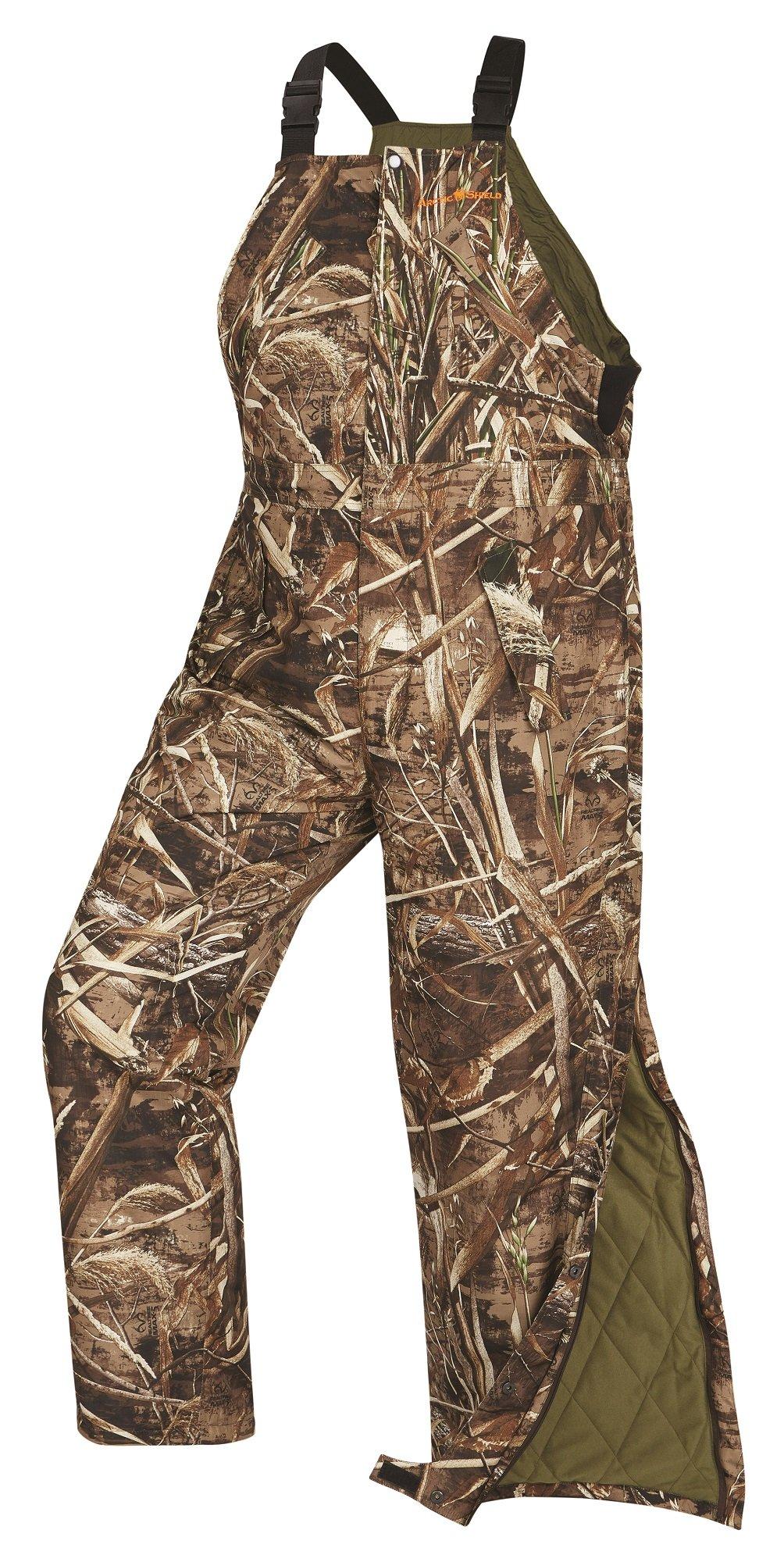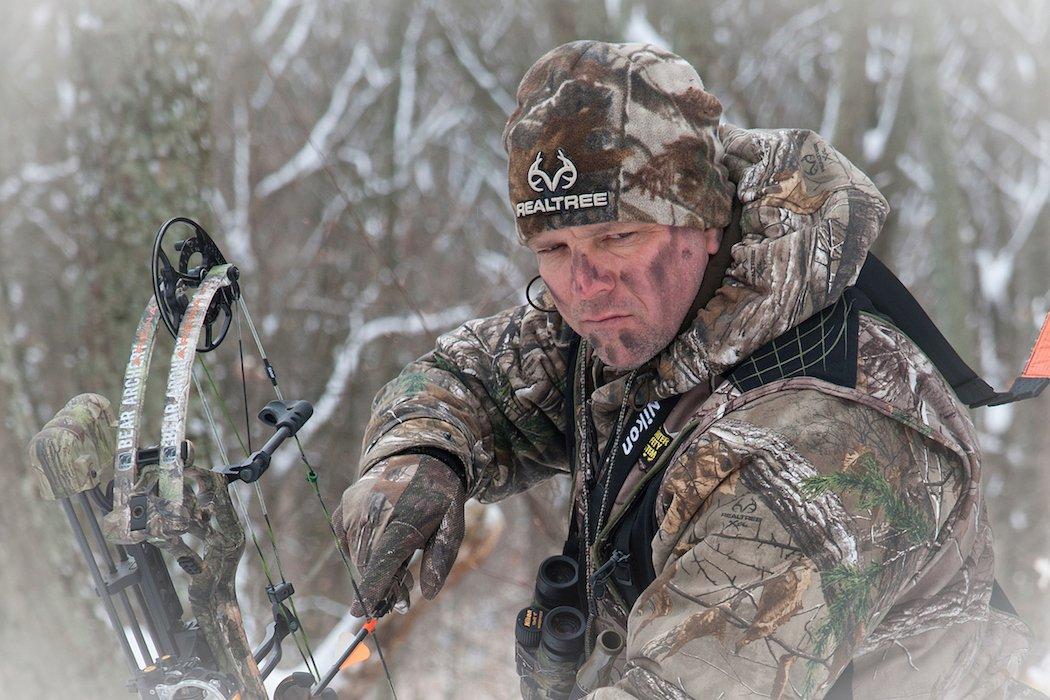The Late Season Can Be Truly Great for Deer Hunting
The late season is a great time to tag a deer. So man, what are you waiting for? If you've still got the green light in your state, here are three solid ways to score on winter whitetails.
1. Take a Stand
It's the post-rut and you know what that means. Bucks disappear. Where do they go? Well, nowhere really. Gaunt and weary from chasing does and eluding hunters for weeks, the survivors hole up in cover near food sources and curtail their movements. You can't set a stand in a funnel or along a doe trail in open woods like you did back in the rut and expect a good buck to cruise by. No, now you should shoot for a tighter, thicker setup.
First find the eats. A patch of standing corn or soybeans or a pocket of late-falling acorns is nirvana. And re-check a harvested grainfield or food plot where you hunted back in October. Even though a field receives moderate to heavy pressure throughout the season, a big buck might still hit it to nose for scraps when food is scarce in December. But the rub is that he generally shows up to feed after dark.
Check an aerial photograph for a fringe thicket 50 to 150 yards off a feeding area. It might be a patch of honeysuckle or multi-flora rose, a strip of pine or cedar, a little beaver swamp — you get the idea. One morning, pack a treestand on your back, play the wind and sneak toward that thicket, scouting as you go for fresh trails and big, wide buck tracks. Search the edges of a fringe thicket for a stout tree with upper cover (a white oak is great because brown leaflets cling to the branches). Put it all together and hang the stand for an ambush.
I can hear some of you low-impact types howling, "Hey, man, you'll spook deer that way!" Yes, you might. But you've only got a few days left to hunt, so why not go for it? Most of the time you won't bust a buck when sneaking in and setting up tight anyway.

If you have the physical and mental stamina, hang in that stand the better part of a day. During the post-rut or what some folks call the "recuperation period" bucks feed mostly at dusk and during the night. But since a deer feels somewhat safe and hidden in a thicket, especially one deep in the woods, he might get up and browse buds and stems or nose for acorns at 10:00 a.m., noon or 2:00 p.m.
Hunting pressure is heavy at the start of the season. It diminishes somewhat toward the middle but then often heats up again at the end. That's another good reason to hang tight in a stand. Other guys will knock around the woods you're hunting, going down to the wire and trying to bust a buck or a doe for the freezer. And on an adjoining property a gang of hunters might put on a drive. Pressure from near and far can put a buck on his feet and push him into a thicket you're watching any time of day.
2. Slip and Slide Around
Maybe you've already spent 10 or 20 days in a stand. You're fed up with that, so try a little still-hunting. Pick a rainy day when the woods are quiet. The morning after a light snow is best. You can put on a suit of Realtree snow camo, pad along like a ghost and maybe cut a smoking track. An old, gray buck up ahead will pop out like a neon sign against the white backdrop.
Stay high on a ridge or hillside, creep slowly and pause every few steps behind trees. Glass down into draws and bottoms. Only the hardiest brush and vegetation still stand. Dissect every inch of it with your binocular. Look for a piece of a feeding or bedded deer — a twitching tail, a flickering ear or, best of all, a glinting tine.
A few years ago some guys in my hunt club put on a drive. I heard 'em coming a mile away, talking and banging sticks on trees. The drivers moved east through a beaver swamp. I stayed high and still-hunted in the same direction. Soon I heard deer running in the leaves. Five does and an 8-pointer churned up a draw a half-mile from the rowdy drivers and 80 yards away from me. My muzzleloader roared. When the smoke cleared, I walked to the buck and checked my watch — 2 o'clock on the last Saturday of the season.
3. Nudge a Buck
Okay, it's closing weekend and you decide to make a drive. That's fine, but leave the hollering and tree banging to the other guys. For my money, a gentle push or nudge by two or three hunters is a better way to score. If you're gun hunting, make sure everybody wears some blaze orange for safety.
Nudging works best in a small cover, say a 15-acre strip of brush or a 20-acre woodlot. Post on the downwind side of a cover. Stay high and watch a buck's likely escape route — a draw, ditch, necked-down finger of brush, etc.
One or two buddies drive around to the upwind side of the cover. They park the truck and walk through the brush like they're strolling down 5th and Main. If the pushers jump deer they stop, crouch wait a minute, then move again. The idea is not to scare the daylights out of an already skittish buck. No, you just want a deer to see, hear or smell the nudgers. If things go according to plan he'll get up and sneak or trot toward your end of the cover. Be poised for that last good shot of the season.
Click here for more deer hunting articles and videos.
Check us out on Facebook.








